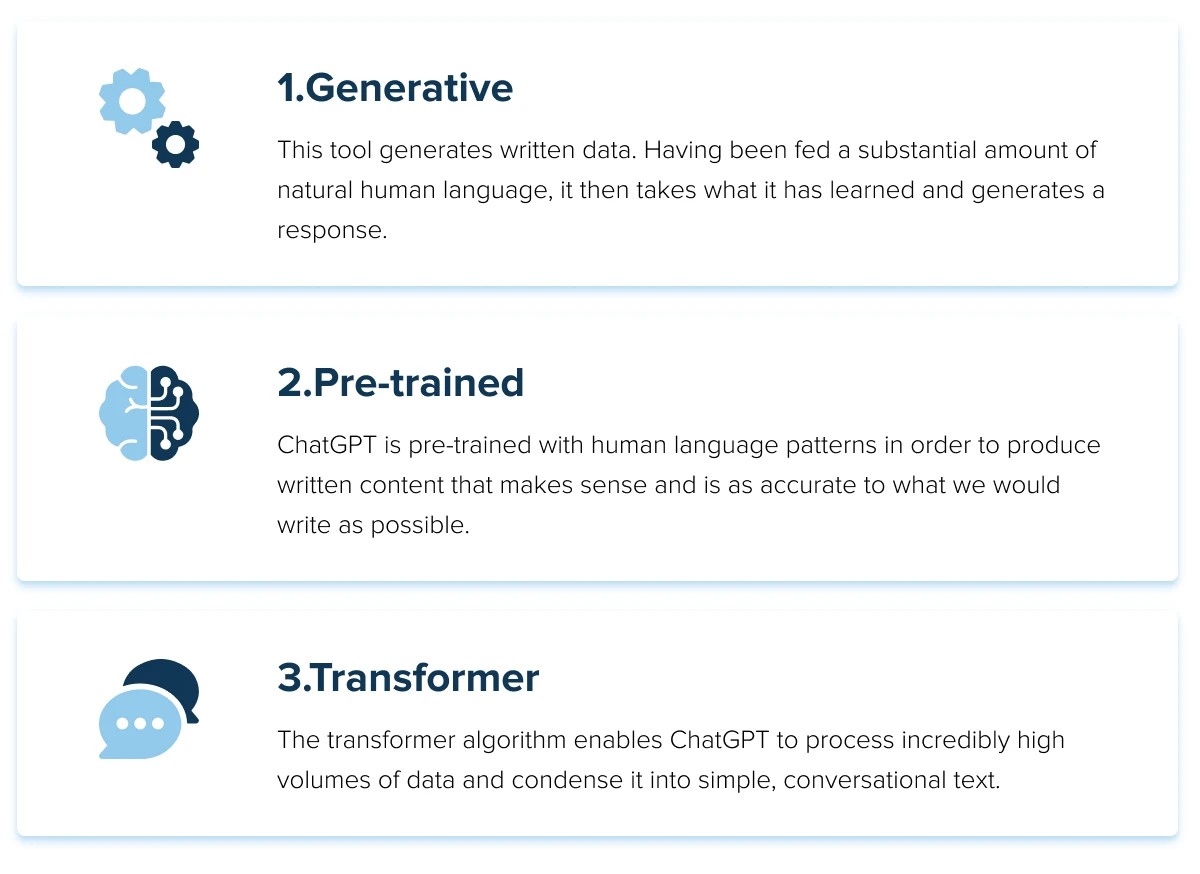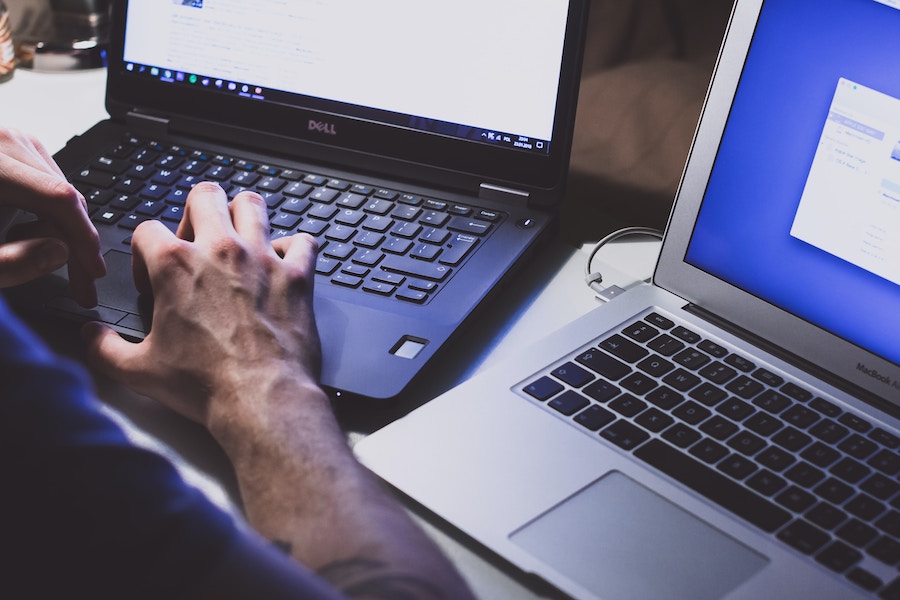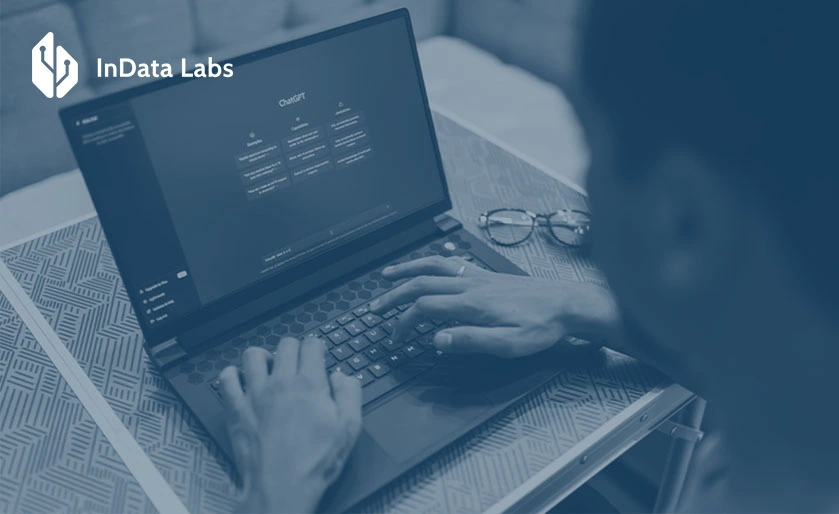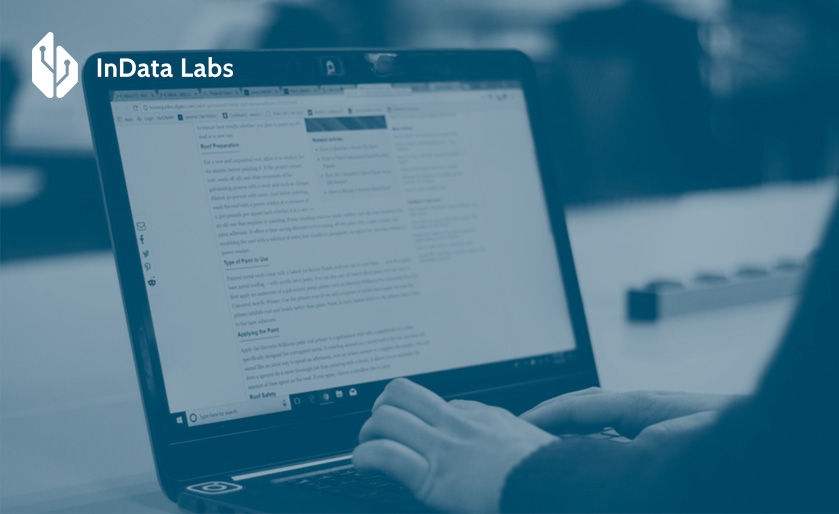If you’ve spent any time on the internet over the past year or two, you’ve probably heard of ChatGPT Large Language Model (LLM). If you’ve only ever heard of it, you might be wondering what is LLM ChatGPT? This powerful natural language processing tool can produce written content with near-human precision—some might even argue superhuman precision.
Simply ask ChatGPT a question or give it a topic, and watch as it churns out beautifully structured sentences, paragraphs, and essays on the topic of your choice. But how does ChatGPT work, and why is it attracting so much media buzz at the moment?
In this article, we’ll unpack the technical terms behind what ChatGPT really is, how it works, and the many different use cases. We’ll also tackle some of the concerns around its potential for damage and what we can expect from it in years to come.
What is ChatGPT?
Is ChatGPT an LLM? Yes, ChatGPT is an AI-powered large language model that enables you to have human-like conversations and so much more with a chatbot. The internet-accessible language model can compose large or small bodies of text, write lists, or even answer questions that you ask.
The Large Language Model that powers ChatGPT makes use of an algorithm that’s trained on huge volumes of text-based data scraped from the internet and any other sources that it’s “fed”. The LLM algorithm can analyze the data and the context of words related to one another, creating text based on a prompt. The more concise the prompt, the more targeted the content. Since its launch in late 2022, ChatGPT’s large language model is free and open to the public. All you need to do to use it is create an account, get verified, and open dialogue with the chatbot.

Source: Unsplash
However, as of February 2023, there is a paid subscription option called ChatGPT Plus, which comes with some additional features. ChatGPT Plus allows paid-for users access to the latest upgrades (currently GPT-4) and newly released plugins. It also provides quicker response rates as it bypasses the wait times of users on the free model. Since its release, ChatGPT has become one of the fastest-growing applications in the consumer sector, with a dataset that’s constantly experiencing rapid growth. It’s spurred on the release of other LLMs such as Google’s BERT, XLNet, Bard, and PaLM 2 (more about some of these later). However, ChatGPT still remains the most-used application online.
ChatGPT has become notable for its ease of use and the way it allows users to offer prompts for the desired style, tone, and format required in text or conversation. It also allows for the customization of details provided and the language in use, adding extra elements of personalization.
What does GPT stand for?
The GPT in ChatGPT stands for three characteristics of this AI system: Generative Pre-Trained Transformer. Let’s run through what those words mean:

How ChatGPT works
This groundbreaking system runs on a language model architecture developed by OpenAI. Generative AI language models like ChatGPT are trained on huge amounts of text. ChatGPT training is based on text from the internet, including documents, essays, blogs, case studies, news articles, and more.
One of several major generative AI companies, OpenAI created ChatGPT so that there would be an unsupervised machine learning (ML) language model capable of “thinking” like a human and having human-like thought responses, thus leading to passable, high quality text.
To use ChatGPT, you simply need to type in a prompt in the message box that’s displayed on the ChatGPT home page. The more clear, concise, and targeted your prompt is, the better suited the answer will be. You can also refine the response by guiding the AI. When this happens, the LLM “learns” from the prompts and can scrape the defined data to create a more targeted response. The more users experiment with prompts, refine their input, and use system-level instructions to guide the AI toward the desired result, the better the quality of the AI-generated content response.
What can I use ChatGPT for?
By using AI systems like ChatGPT, we can save time, learn, and become more productive. In fact, AI has the potential to automate as much as 40% of the average person’s workday, depending on what their job entails.
So what are the practical ways in which a person like you or me might use ChatGPT? Well, there are many, some of which include:
- Writing an essay
- Resume building
- Writing a cover letter
- Understanding complex ideas in simple terms
- Summarizing written content
- Writing code
- Data lake implementation
ChatGPT is safe and can even be used to write code, which also means it has the potential to “write” software applications, website code, and more. However, doing so would require intensive input from the user. It’s also possible to use ChatGPT for SEO and to use ChatGPT in NLP (natural language processing).
Using ChatGPT for SEO specifically is growing in popularity with digital marketers. It allows for the planning of content clusters, content ideation based on keywords, and the creation of keyword-centric content, titles, and meta descriptions. Plus, it has the potential to assist in improving content formatting.
As you can gather, there are plenty of ChatGPT use cases for business. As AI evolves, the use cases will too, and they’ll expand across sectors and industries.
The ChatGPT model
ChatGPT developer OpenAI created a new type of model known as a generative pre-trained transformer (GPT). GPT models can “continue” input text in most scenarios, and they can do this at the same level or better and faster than humans can.
A few examples of other models include the Google Pathways language model and Bert (Bert model size, like that of other large language models, depends on various factors, such as the model’s number of layers and parameters).

Source: Unsplash
To clarify, there’s no difference between a model and AI. Whether you’re talking about ChatGPT, Google Language Model, or other large-scale language models, “model” is a technical word for “AI.” Model developers focus on building predictive analytics. Choosing a model is the same thing as choosing an AI. The user needs to choose a model carefully, as models or AIs are highly specialized for specific inputs or sets of tasks.
Large language models explained
Let’s elaborate on this and take a closer look at LLM ChatGPT’s meaning. Large language models are prediction engines, each of which usually is specific to certain types of problems. Their commonality is that they output a prediction, often with a confidence score, after the user provides them with input. There are many different models available, from those that identify images and predict championship outcomes to those which guess the weather or movements on the stock market.
When it comes to ChatGPT models, these are prediction engines for text. You can use them for following editing and formatting instructions, Q&A, and writing code.
Let’s take a brief overview of various language model GPT options:
- GPT-3 models: Language model GPT 3 is an “instruct” model which generates text following clear instructions rather than generating conversational chat.
- GPT-3.5 models (ChatGPT): Launched on March 1, 2023, these models are built on top of GPT-3 models. While these models are optimized for conversational chat, they’re usually as good with instructions as GPT-3 models. In some cases, Chat CPG GPT-3.5 results are too “creative” or “chatty.”
- GPT-4 models: Launched in mid-March 2023, GPT-4 models are the latest type of OpenAI models. They’re multimodal, meaning they can receive text and image inputs, and their advanced reasoning capabilities allow them to solve much more complex problems. These models generally are better at solving complex mathematical problems than previous models. ChatGPT GPT-4 models use between twice and eight times more tokens in their context than GPT language models such as GPT-3 and GPT-3.5 models, although prompts are between 15 and 30 times more expensive, while completions are between 30 and 60 times more expensive.
How good is ChatGPT?
Put simply, LLM, meaning ChatGPT, is safe, and it’s very good. Scary good, according to some. With access to such high volumes of text written by skilled humans, it only makes sense that it has adopted some of our most impressive writing habits. It’s easy to see why more businesses are adopting an artificial intelligence strategy.
Its high level of accuracy and eloquence has caused internet-level disruption to modern consumers, attracting a staggering 100 million users within just two months of being published. For comparison, Tik Tok only reached 100 million users after nine months of being released.
The fact that is also available for free makes it an exceptional tool. This allows absolutely anyone access to its LLM and creates a level playing field. It’s also designed to have a solution to every problem, regardless of the subject.
Additionally, one of the many features that make ChatGPT stand out is its use of Reinforcement Learning from Human Feedback (RLHF). OpenAI’s human trainers provided the model with two-sided conversations where the trainers played the role of both the AI assistant and the user. This allowed for the creation of a more organic response shaped around the natural flow of conversation.
Does ChatGPT give everyone the same answer?
It’s tempting to expect ChatGPT LLM to give the same answer in the same wording to all users who ask the system the same question. But this wouldn’t be true.
The system can generate similar responses to similar or identical queries, but it can also generate significantly different responses based on the quality, phrasing, and specific context of the input that each user provides. As it is constantly learning, the datasets update, potentially refining answers to questions in line with the updated learning model.
Can teachers detect ChatGPT and AI-generated text?
Students who are considering using LLM ChatGPT to give them a helping hand with their assignments might be concerned that their teachers or universities can detect ChatGPT code. Obviously, this is a serious concern, as AI-generated text isn’t original work. Instead, it’s considered plagiarism.
The answer to this question is that yes, plagiarism detectors such as Turnitin can detect text that was generated by ChatGPT and other AI systems. Like other plagiarism detectors, Turnitin looks deeply at documents for any inconsistencies that set them apart from normal submissions. Turnitin reportedly has 98% confidence. Teachers and professors can also pick up AI content when the style of writing does not match the student’s usual writing style and when the text includes well-written points that don’t support each other.

Source: Unsplash
If a student does decide to use ChatGPT for assistance while writing an assignment or essay, they can run the finished work through Turnitin to check the score. A good score to aim for is between 15 and 20%. If the student’s score is higher, they can tweak the text themselves to possibly lower it. It’s also possible to use QuillBot to circumvent Turnitin, as the plagiarism detector isn’t able to detect any paraphrasing done by QuillBot.
However, students should think very carefully about doing this, as it does have a negative impact on their academic integrity. It would be better to use ChatGPT and AI as a learning tool rather than a way of cheating.
Why are some people concerned about the use of ChatGPT?
There are two sides to every coin, and ChatGPT is one complicated coin. Its ability to produce sophisticated, believably human-written text within minutes (sometimes seconds) has prompted reasonable concern among critics. Here are their main concerns:
Privacy and security threats
In March 2023, some ChatGPT users noticed conversation headers in the sidebar that they did not input themselves. The system had accidentally shown them answers to questions that didn’t belong to them. If you were a business writing code, this would be a major security issue. Even extremely tech-savvy tech conglomerates like Google have warned their employees about ChatGPT use. In fact, they not only warn their employees about ChatGPT but about their own chatbot, Bard too. They have concerns about the sharing of private and confidential information leading to data leaks. As of yet, ChatGPT doesn’t have the kind of security you’d need for developing precious code or content.
Bias is a part of its language
One of many promising data science solutions, ChatGPT is trained on human language and texts. This means it has, unfortunately, also been trained to share the same biases that we have developed over time. These biases may be unconscious, but they run throughout the fabric of society and are hardwired into many of us.
Left to its own devices, ChatGPT has produced some shockingly unethical answers discriminating against race, gender, ethnicity, and more. Open AI claims they are working on this. Humanity is guilty of the biases that ChatGPT has now adopted, but this remains a serious problem that many people refuse to entertain. This issue does need to be taken into account, especially considering the many potential applications of AI in data science and other fields.
It’s not always right
ChatGPT’s answers are not perfect. It produces answers to questions based on what we have historically been most likely to say, not necessarily the truth. It may also make confident statements on topics it doesn’t yet fully understand. This may make it appear authoritative, but in fact, it’s simply creating a mistruth that could lead to dire consequences if taken as fact.

Source: Unsplash
ChatGPT could take some human jobs away
Another major concern is that ChatGPT can replace programmers as well as other jobs that exist today, thus contributing to unemployment. Copywriters, social media managers, screenwriters, and text developers of all kinds are at risk of losing work due to this tool.
It challenges educational development
When we compare today’s learning to a century ago, the average person gets more than double the number of years of education. This allows for extended development, a greater degree of literacy, and an overall increase in intellectual ability. However, one of the most popular use cases of ChatGPT amongst students is as a tool to write essays and other written project material.
The whole point of getting young people to write their own material is to help them learn skills. But if they keep using ChatGPT, those skills could be lost.
Final thoughts
Like so many incredible tools, ChatGPT’s power can be put to use in productive and unproductive ways. As the fastest-growing LLM in the world, it’s quickly been adopted in many industries and sectors, from web development to customer support and education.
However, there are pros and cons to using this incredible system, and for now, it’s still in its infancy phase. Both organizations and individuals need to be aware of the risks of using ChatGPT as it is still a machine that doesn’t always provide information that is correct. Additionally, the data that are used as prompts must be carefully considered, as it could lead to an unintentional privacy breach.
As competition in the LLM sector grows, the use of ChatGP and other models is set to rise, but it’s crucial to remember that the AI is only as smart as the datasets it’s given to work from and the algorithms it’s trained on. It’s an excellent tool to enhance processes, improve productivity, and generate ideas. However, it’s not a replacement for human knowledge, and it certainly is not a source that’s always factual or unbiased.
Experimenting with LLMs like ChatGRP can open new doors. However, users must be mindful of the information they enter and the responses that they rely on. Only time will tell how this technology evolves and how we engage with it in future years. For now, it has numerous useful applications, but it should never replace humans in their entirety.
Author bio
Kristie Wright is an experienced freelance writer who covers topics on logistics, finance, and management, mostly catering to small businesses and sole proprietors. When she’s not typing away at her keyboard, Kristie enjoys roasting her own coffee and is an avid tabletop gamer.
Integrate ChatGPT into your business
Looking for a trusted ChatGPT integration and LLM service provider? Get help from our team of professionals.



